#Pohela Boishakh
Explore tagged Tumblr posts
Text
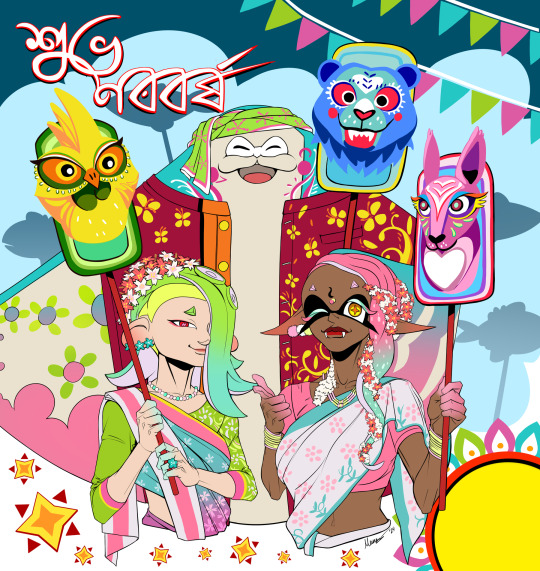
🐤🐇🐻☀💐📓
Click and Open image for HQ! [Ko-fi] | [Twitter] | [Instagram]
Happy Pohela Boishakh!
#শুভ নববর্ষ#shubho noboborsho#Pohela Boishakh#Bengali New Year#deep cut#shiver#big man#fyre#frye onaga#shiver hohojiro#springfest#splatfest#splatoon 3#splatoon#big man splatoon#frye splatoon#shiver splatoon
115 notes
·
View notes
Text
Bangladesh's Historic Pride Walk
Rongdhonu Shovajatra ( means "Rainbow Rally" in Bengali) was an annual pride held in Bangladesh. The pride rally was organized by Roopbaan. In 2014, during the Bengali New Year, members of Roopbaan and LGBTQI+ community participated in a parade in Sahabaag, Dhaka. It was a significant moment that remains memorable for many Bangladeshis, especially Queer Bangladeshis. However the Rongdhonu Shovajatra garnered considerable media attention and faced both support and backlash.
The pride was attended by many notable LGBTQI+ icons, such as, Xulhaz Mannan, Mahabub Rabbi Tonoy, Joya Shikder, Tanvir Annoy, Tanveer Rouf, Mazharul Islam, Rasel Ahmad, etc.
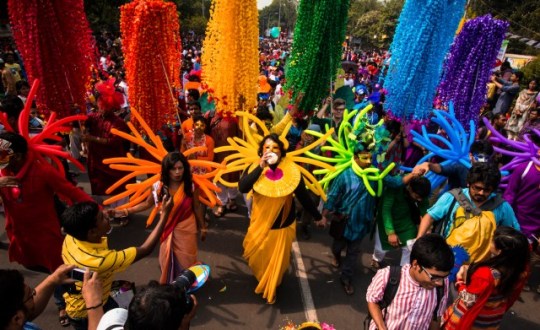
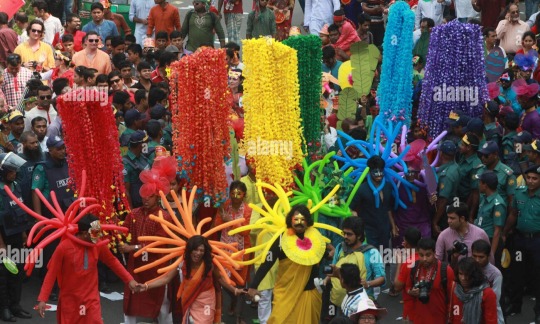
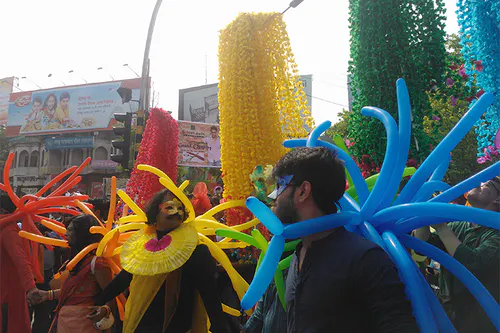
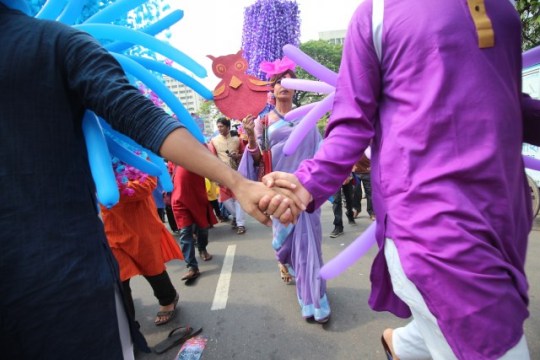
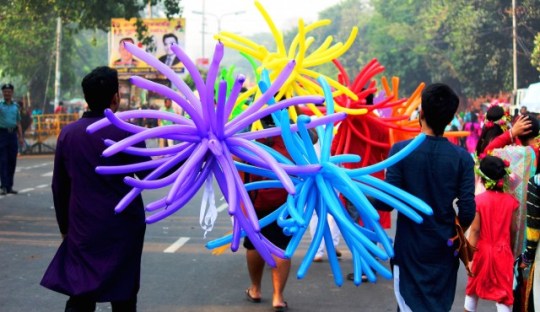

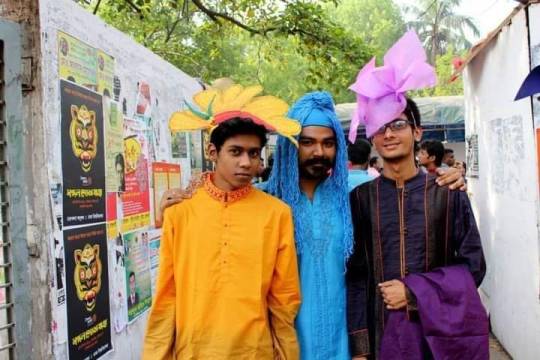
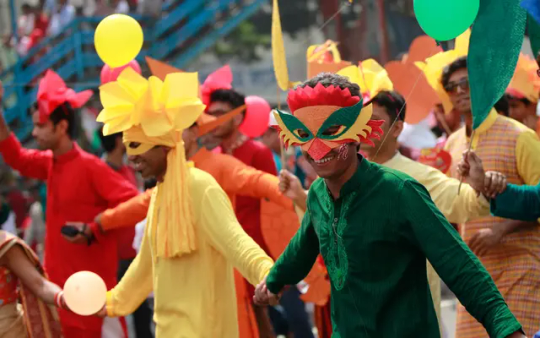
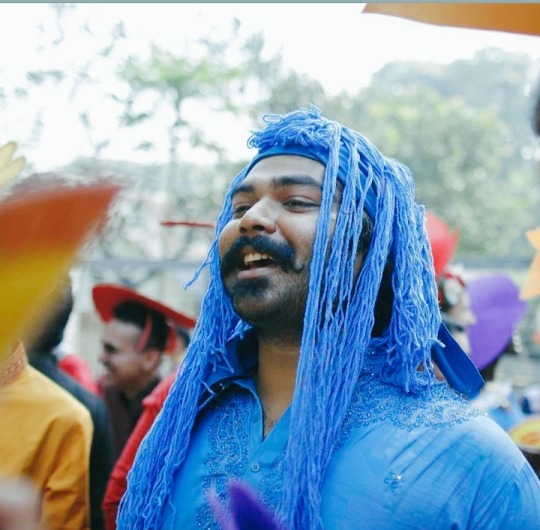
#pride#pride parade#lgbtqia#new year#bangladesh lgbtq#queer rights#asia#queer history#bangladesh#pohela boishakh
15 notes
·
View notes
Text
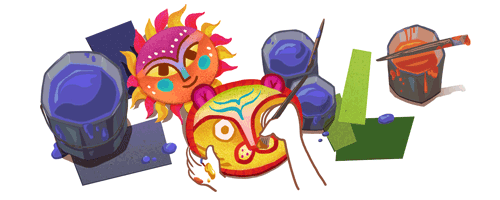
শুভ নববর্ষ ১৪৩০!
Śubho nôbobôrṣo 1430!
Greetings on the auspicious occasion of Bengali New Year! আশা করি আপনার নতুন বছরটি খুবই ভালো আর মঙ্গলময় হবে 🤍
#bengali#bangla#india#langblr#bangladesh#west bengal#tripura#assam#desi#বাংলা#noboborsho#নববর্ষ#pohela boishakh#poila boishakh#পহেলা বৈশাখ#bengali new year#১৪৩০#1430
26 notes
·
View notes
Text
Home Ministry Directs: Pohela Boishakh Festivities Must Conclude by 6 PM
The Ministry of Home Affairs has issued a directive stipulating that all Pohela Boishakh celebrations, including those held at Ramna Park, Suhrawardy Udyan, Dhaka University, Hatirjheel, and Rabindra Sarobar, must wrap up by 6 pm. This decision emerged from a law and order meeting convened to discuss the Pahela Baishakh festivities at the Ministry of Home Affairs on Wednesday. Furthermore,…

View On WordPress
0 notes
Text
Why does everyone hate me. I’m at a pohela boishakh party right. And the colors are white and red. But my aunty gave me a pink sari to wear because the other girls were going to wear the same one, but they’re wearing the same one because they’re in a dance group, and I’m not in the group?? And she knows this??? So why in the hell am I wearing this?????? I’m sitting here looking like an idiot because everyone else is wearing red and I’m in my pretty pastel perfect pink alone.
10 notes
·
View notes
Text
omg pohela boishakh is only two weeks away fjsbxskcjemszwksbsj
eso he boishakh indeed!
3 notes
·
View notes
Text
Events for the Bengali and Muslim Communities in Birmingham
Birmingham, a city rich in diversity, is known for its vibrant cultural tapestry, where various communities come together to celebrate their heritage and traditions. Among these, the Bengali and Muslim communities play a significant role in adding to the city's colorful cultural landscape. This article delves into the heart of these communities, focusing on the Bengali event in Birmingham and single Muslim marriage events, which are pivotal in bringing people together and fostering connections.
Celebrating Bengali Heritage in Birmingham
Birmingham hosts a variety of cultural events throughout the year, and the Bengali event in Birmingham is one that stands out for its lively and colorful celebration of Bengali heritage. These events are a delightful mix of traditional music, dance, art, and cuisine, offering a taste of Bengal right in the heart of the UK. Whether it's the celebration of Durga Puja, Pohela Boishakh (Bengali New Year), or smaller cultural gatherings, these events bring the Bengali community together, fostering a sense of unity and pride.
The Bengali event in Birmingham serves not only as a platform for cultural expression but also as an opportunity for the younger generation to connect with their roots. It allows them to experience and participate in the rich traditions of their heritage, ensuring that these customs continue to thrive in future generations. These events are open to all, welcoming people from different backgrounds to experience Bengali culture, fostering intercultural understanding and harmony in the city.
Connecting Hearts: Single Muslim Marriage Events
Parallel to these cultural celebrations, Birmingham also hosts single Muslim marriage events that are crucial for individuals seeking lifelong companionship within the framework of Islamic values. These events are meticulously organized, providing a comfortable and respectful environment where single Muslims can meet potential partners.
The single Muslim marriage events in Birmingham cater to a diverse group of individuals, from young professionals to those who are a little older and are still seeking the right partner. These events are not just about finding a spouse; they also offer valuable opportunities for networking, learning, and growing within the community. The structured format ensures that participants can interact meaningfully with others, discussing shared values, goals, and interests in a respectful and dignified setting.
These events are organized by various community groups and organizations, with the goal of helping individuals find compatible partners while adhering to Islamic principles. The success of these events lies in their ability to bring together like-minded individuals who are serious about finding a partner for marriage, creating an atmosphere of trust and mutual respect.
Fostering Community and Connections
Both the Bengali event in Birmingham and the single Muslim marriage events are integral to the social fabric of Birmingham’s Bengali and Muslim communities. These events not only celebrate culture and tradition but also create avenues for meaningful connections and relationships.
In a city as diverse as Birmingham, such events play a crucial role in maintaining the cultural integrity of different communities while promoting inclusivity and understanding. They offer a space where traditions can be celebrated, new connections can be forged, and individuals can find a sense of belonging.
0 notes
Text
Product Price Fluctuations in Bangladesh: Causes and Consequences
Understanding product price fluctuations is crucial for consumers, businesses, and policymakers in Bangladesh. The prices of goods and services can vary significantly over time, influenced by a myriad of factors ranging from local conditions to global trends. Recognizing the causes of these fluctuations and their potential consequences can help stakeholders make informed decisions and strategize effectively. This article explores the key factors driving product Price In Bangladesh and the implications of these fluctuations.

1. Economic Factors
a. Inflation and Deflation
Inflation, the general rise in prices across the economy, is a primary driver of price fluctuations. In Bangladesh, inflation can be influenced by a range of factors including monetary policy, fiscal policy, and changes in the cost of production. When inflation is high, the cost of goods and services increases, leading to higher prices. Conversely, deflation, a decrease in general price levels, can result in lower prices but may also indicate weak economic conditions.
b. Currency Exchange Rates
The value of the Bangladeshi Taka (BDT) relative to other currencies affects the prices of imported goods. A depreciation of the Taka increases the cost of imports, leading to higher prices for products that rely on foreign raw materials or finished goods. Conversely, an appreciation of the Taka can reduce import costs and lower prices. Fluctuations in currency exchange rates are closely monitored by businesses and consumers as they impact the cost of everyday items.
c. Interest Rates
Interest rates, set by the central bank, play a role in price fluctuations. Higher interest rates can increase borrowing costs for businesses, which may be passed on to consumers in the form of higher prices. Conversely, lower interest rates can reduce borrowing costs and potentially lower prices. The central bank’s monetary policy decisions are therefore crucial in managing price stability.
2. Supply and Demand Dynamics
a. Supply Chain Disruptions
Disruptions in the supply chain can significantly impact product prices. Natural disasters, political instability, or logistical challenges can affect the availability of raw materials and finished products. For example, flooding or transport strikes can disrupt the distribution of goods, leading to shortages and price increases. Businesses often face challenges in maintaining inventory levels, which can contribute to price volatility.
b. Seasonal Demand
Seasonal changes in demand also play a significant role in price fluctuations. In Bangladesh, certain products experience higher demand during specific seasons. For instance, the demand for clothing, decorations, and food items typically spikes during festivals such as Eid and Pohela Boishakh. Increased demand during these periods can lead to higher prices as retailers adjust their pricing strategies to capitalize on peak purchasing times.
c. Crop Yields and Agricultural Production
For agricultural products, fluctuations in crop yields due to weather conditions or pest infestations can affect prices. A poor harvest due to adverse weather or disease can lead to reduced supply and higher prices for food items like rice, vegetables, and fruits. Conversely, a bumper harvest can lead to lower prices as supply increases. Monitoring agricultural conditions is essential for predicting price trends in food products.
3. Market Competition
a. Competitive Pricing Strategies
In competitive markets, businesses often adjust their prices in response to competitors’ pricing strategies. Companies may lower prices to attract customers or differentiate themselves from rivals. Conversely, in markets with limited competition or monopolistic conditions, prices may remain high due to lack of alternative options for consumers.
b. Price Wars
Price wars between competitors can also influence product prices. Retailers and manufacturers may engage in aggressive pricing tactics to capture market share. While this can lead to lower prices for consumers in the short term, it can also have long-term consequences such as reduced profit margins and potential market consolidation.
4. Government Policies
a. Taxes and Tariffs
Government policies, including taxes and tariffs, impact product prices. Changes in VAT (Value Added Tax), import duties, or other taxes can directly affect the cost of goods. For instance, an increase in import tariffs can raise the cost of imported products, leading to higher retail prices. Conversely, tax reductions or subsidies can lower prices and make products more affordable for consumers.
b. Regulatory Changes
Regulatory changes, such as adjustments in quality standards or safety regulations, can also impact prices. Compliance with new regulations may involve additional costs for businesses, which can be reflected in higher product prices. Conversely, deregulation or reduced compliance costs may lead to lower prices.
5. Global Economic Trends
a. Commodity Prices
Global commodity prices influence local product prices, especially for goods that rely on international raw materials. Fluctuations in the prices of commodities such as oil, metals, and agricultural products can impact the cost of production and, consequently, the prices of finished goods. For example, rising global oil prices can lead to higher transportation and production costs, which can be passed on to consumers.
b. International Trade Agreements
Trade agreements and international economic conditions affect product prices. Trade agreements that facilitate easier access to foreign markets or reduce tariffs can lower import costs and reduce prices for consumers. Conversely, trade restrictions or economic sanctions can lead to higher prices by limiting access to international goods and materials.
6. Consequences of Price Fluctuations
a. Consumer Behavior
Price fluctuations influence consumer behavior and purchasing decisions. When prices rise, consumers may adjust their spending habits, seek out alternative products, or delay purchases. Conversely, lower prices can encourage increased spending and consumer confidence. Understanding these behavioral shifts is crucial for businesses to adapt their marketing and sales strategies.
b. Business Profitability
For businesses, price fluctuations can impact profitability. Rising costs may erode profit margins, especially if businesses are unable to pass these costs on to consumers. Conversely, competitive pricing or price wars can reduce margins but increase sales volume. Businesses must carefully manage their pricing strategies to balance profitability with market demand.
c. Economic Stability
On a macroeconomic level, significant price fluctuations can affect economic stability. High inflation or deflation can lead to uncertainty and reduced consumer confidence. Policymakers must monitor price trends and implement measures to maintain economic stability and protect purchasing power.
d. Investment Decisions
Investors also pay close attention to price fluctuations as they can impact investment returns. Changes in commodity prices, currency exchange rates, and market conditions can influence investment performance. Investors need to assess these factors when making decisions about where to allocate their resources.
Conclusion
Product price fluctuations in Bangladesh are driven by a complex interplay of economic factors, supply and demand dynamics, market competition, government policies, and global trends. Understanding these causes and their consequences is essential for consumers, businesses, and policymakers alike. By recognizing the factors that influence prices, stakeholders can make more informed decisions, plan effectively, and adapt to changing market conditions. Whether managing household budgets, setting business strategies, or formulating economic policies, a thorough grasp of price fluctuations is key to navigating the evolving economic landscape of Bangladesh.
0 notes
Text
Tgungczyeszenphi: A Celebration of South Asian and Southeast Asian Cultures
Welcome to Tgungczyeszenphi, a vibrant space where the rich tapestries of South Asian and Southeast Asian cultures come alive. Here, we explore the traditions, cuisines, arts, and histories that make these regions so captivating. Join us on a journey through the diverse and colorful landscapes of South Asia and Southeast Asia.
The Diverse Tapestry of South Asia
South Asia, home to a myriad of cultures, languages, and traditions, is a region of immense diversity and historical depth. From the majestic Himalayas to the bustling cities of India, Pakistan, Bangladesh, Sri Lanka, Nepal, Bhutan, and the Maldives, each country offers a unique cultural experience.
Traditions and Festivals
Diwali (India): Known as the Festival of Lights, Diwali is celebrated with the lighting of lamps, fireworks, and feasts. It symbolizes the victory of light over darkness and good over evil.
Pohela Boishakh (Bangladesh): The Bengali New Year, marked by vibrant parades, traditional music, and delicious food, is a time for renewal and celebration.
Culinary Delights
South Asian cuisine is a feast for the senses, characterized by its bold flavors and aromatic spices.
Biryani: A fragrant rice dish cooked with spices, meat, and sometimes vegetables. Each region has its own version, from Hyderabadi to Kolkata biryani.
Masala Chai: This spiced tea, made with black tea, milk, and a blend of spices like cardamom and ginger, is a staple in many South Asian homes.
The Vibrant Cultures of Southeast Asia
Southeast Asia, encompassing countries like Thailand, Vietnam, Indonesia, Malaysia, the Philippines, Singapore, Myanmar, Cambodia, Laos, Brunei, and Timor-Leste, is a region of stunning natural beauty and rich cultural heritage.
Traditions and Festivals
Songkran (Thailand): The Thai New Year is celebrated with water fights and rituals to wash away bad luck and usher in good fortune.
Tet (Vietnam): The Vietnamese Lunar New Year is a time for family reunions, traditional foods, and honoring ancestors.
Culinary Delights
Southeast Asian cuisine is renowned for its fresh ingredients and harmonious balance of flavors.
Pho (Vietnam): A flavorful noodle soup made with beef or chicken, herbs, and spices, often enjoyed as a comforting breakfast.
Nasi Goreng (Indonesia): A savory fried rice dish, often served with a fried egg on top, and flavored with kecap manis (sweet soy sauce) and sambal (chili paste).
Artistic Expressions
Both South Asia and Southeast Asia boast rich artistic traditions that reflect their histories and cultural values.
South Asian Arts
Classical Dance: Bharatanatyam, Kathak, and Odissi are just a few of the classical dance forms that tell stories through intricate movements and expressions.
Miniature Paintings: Originating from regions like Rajasthan and Mughal courts, these detailed artworks depict historical events, court scenes, and mythology. Southeast Asian Arts
Wayang Kulit (Indonesia): Traditional shadow puppetry that narrates epic tales from Hindu epics like the Ramayana and Mahabharata. Batik (Indonesia and Malaysia): A fabric dyeing technique using wax to create intricate patterns and designs, recognized by UNESCO as a Masterpiece of Oral and Intangible Heritage.
Connecting the Dots: Shared Heritage and Influences
The histories of South Asia and Southeast Asia are interwoven with shared influences, particularly through trade, religion, and migration.
Buddhism and Hinduism: These religions have deeply influenced the cultural and spiritual lives of many Southeast Asian countries, with ancient temples like Angkor Wat in Cambodia and Borobudur in Indonesia standing as testaments to this shared heritage. Maritime Silk Route: The historical trade routes facilitated the exchange of goods, ideas, and cultural practices, enriching both regions.
Embracing Our Heritage
At Tgungczyeszenphi, we celebrate the beauty and diversity of South Asian and Southeast Asian cultures. By exploring their traditions, arts, and cuisines, we honor the past and inspire a deeper appreciation for these vibrant regions.
Join us on this journey of discovery and celebration, as we delve into the wonders of South Asia and Southeast Asia. Welcome to Tgungczyeszenphi, where cultures converge and heritage thrives.
0 notes
Video
পহেলা বৈশাখ- বাংলা নববর্ষ উদযাপিত || Bengali New Year || Pohela Boishakh...
0 notes
Text

Pohela Boishakh ! Ginteja Insurance visit : https://www.gintejainsurance.co
0 notes
Text
Pohela Boishakh
Embark on the exciting academic journey with MBBS in Abroad. Study at the leading #medicalcolleges and experience a world-class education. If you want to study MBBS abroad, contact us today to know more.
Call now: +91-9915635728
Visit us: www.bablonsconsultants.com
#pohelaboishakh #pohelaboishakhnews #pohelaboishakhdance #pohelaboishakhcelebration #aisepohelaboishakh #shuvopohelaboishakh #pohelaboishakh2024kobe #pohelaboishakhsongdance #pohelaboishakhsong #pohelaboishakhfilm #pohelaboisakh #pahelabaishakh #pohelaboishakhramnabotmul #boishakh #pohelaboishakhmangalshobhajatra #pohelaboishakh2024 #eshoheyboishakh #pohelaboishakhdhakauniversity2024 #pohelaboishakh2020 #pohelaboishakhfestival

0 notes
Video
youtube
সামনে এগোনোর প্রত্যয় মঙ্গল শোভাযাত্রায় || Pohela Boishakh | Dhakatimes ||
0 notes
Text
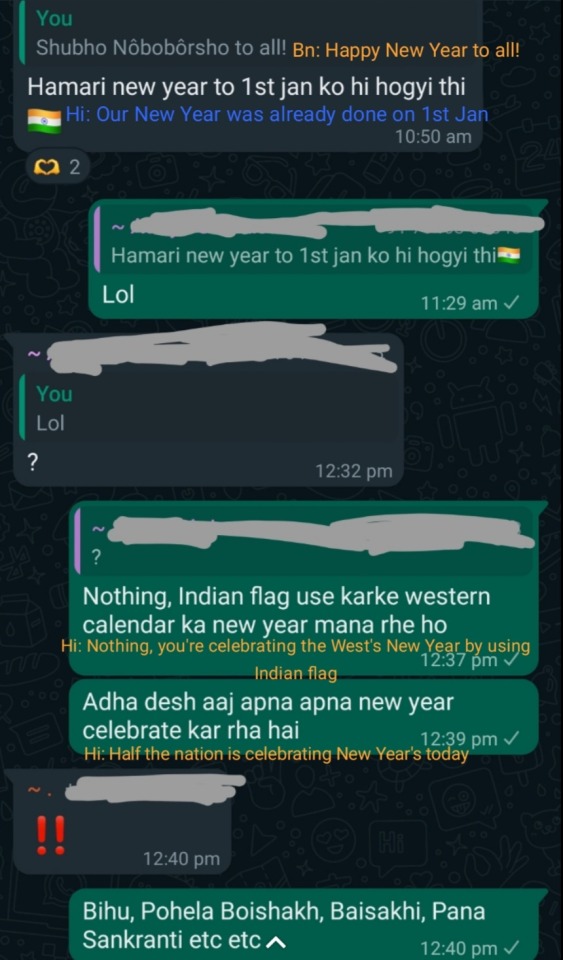
Ba*ler dol thinks they can ruin my mood on Pohela Boishakh.
Sometimes I feel like these people aren't nationalistic, they're hindustanistic. And I'm no Hindustani, I'm a proud Indian Bengali.🇮🇳
#bengali#bangla#india#hindi#conversation#festivals#new year's#pohela boishakh#baishakhi#rongali bihu#pana sankranti#diversity rules
6 notes
·
View notes
Text

নবরূপে নববর্ষ রাঙিয়ে দিক প্রতিটা মুহূর্ত। আগামী দিনগুলি সুন্দর হোক। শুভ নববর্ষ ১৪৩১ ।
#শুভ #নববর্ষ #new #year #pohela
#Boishakh #পহেলা #বৈশাখ #১৪৩১ #compify #tech #solution #compifytechsolution
0 notes
Text
I’m so excited for pohela falgun and pohela boishakh waaaaah!!!
#pohela falgun is so soon yayayayay!!!#I love dressing up in pretty colors and eating yummy food#going to see if I can find a nice sari#I’ve actually never worn one….I’m a fake Bangladeshi guys I’m sorry#Eid is going to be super soon too omg#The part about a new year I love the most is my birthday and my holidays
10 notes
·
View notes